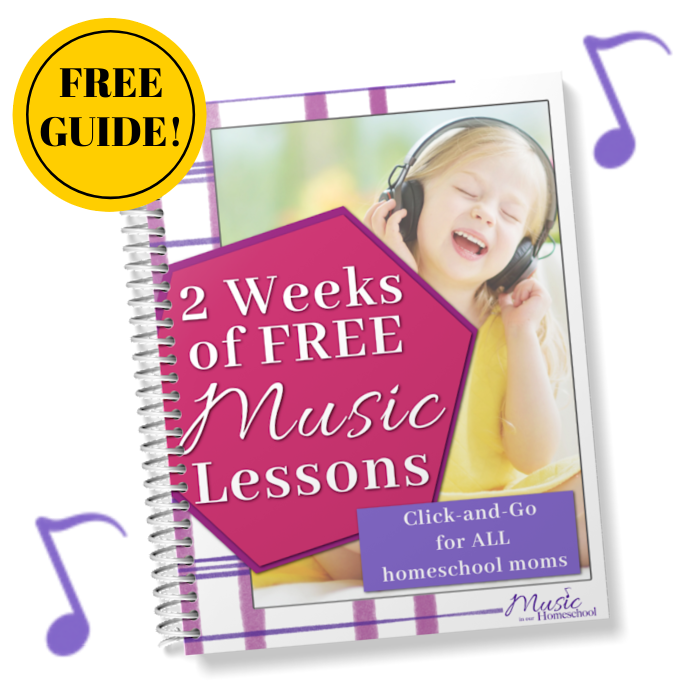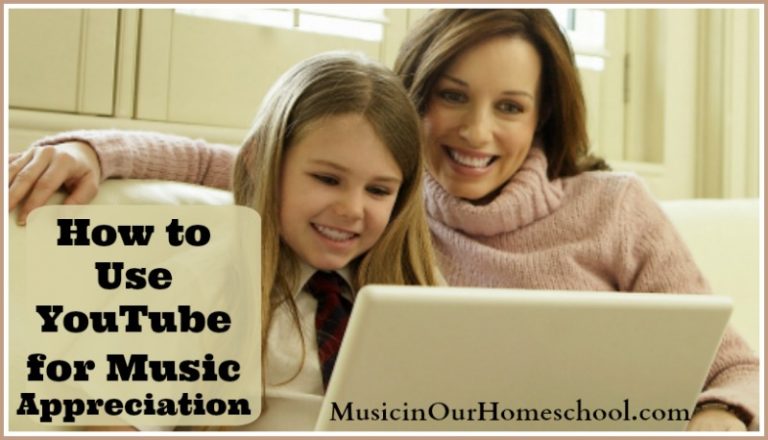Basic Note Reading for Homeschool Parents Part 1 of Mastering Music 101 (E30)
If you’re a homeschool mom who has never studied music, you are going to love my new series on Mastering Music 101: Basics for Homeschool Parents. Today is part 1 ~ Basic Note Reading. Let me say, however, that you as the homeschool parent do not have to master these concepts in order to help your children learn them. I want to just give you an overview today. And you can continue to learn more as you learn alongside your child. The next two weeks we’ll continue the series with a Music History Overview and an Introduction to Instruments.

Basic Note Reading
Let’s begin with the simple music theory and basic note reading. You’ll want to download the Mastering Music 101 printable pack here: https://ichoosejoy.activehosted.com/f/327 to more effectively learn these concepts, and today you might want to head over to the YouTube video!

Organization of Music Notes
How is music organized? By about the year 1600, music was organized in a way that is similar to how we write and read music today. Music notes are written on a staff of five lines and four spaces. If a brace connects two staves, one staff above the other, it’s called a grand staff.
A treble clef will be on the top staff and a bass clef on the bottom. This is the type of staff organization that a pianist would use or a choir would sing from. The higher notes are on the treble staff and the lower notes are on the bass clef staff. Each line and space is numbered, counting from bottom to top, and every single line and space has a particular note name, which is determined by the clef: whether treble clef or bass clef.
Notes of the Treble Clef
The bottom line in the treble clef is an E, and then G, B, D, and F. Sometimes we teach kids to memorize a sentence as a mnemonic device to remember the notes of the treble clef staff. Something like Every Good Boy Deserves Fudge. That’s what I learned when I was a kid taking piano lessons. I don’t particularly like that method, however, because then the child has to first think about the word, Every, and then think about the first letter, E, and then determine that the line note in question is an E. It takes a lot of steps to get to the answer.

Here’s a quicker way to memorize it, with a chant, EGBDF, EGBDF, those are the lines of the treble clef. For the spaces of the treble clef staff from bottom to top, they spell a word, face. F, A, C, E. Notes go in order of the alphabet. Specifically, the musical alphabet is A, B, C, D, E, F, G. It stops at G and starts over again. A, B, C, D, E, F, G. A, B, C, D, E, F, G.
Notes of the Bass Clef
Now let’s talk about the bass clef staff. The bass clef lines from bottom to top are G, B, D, F, A. Here’s a chant for this one. G, B, D, F, A. G, B, D, F, A. The lines of the bass clef all the way. And the spaces are A, C, E, G. So here’s a chant for that one. A C E G, A C E G, the bass clef spaces, wowee.

Ledger Lines, Middle C, and Piano Keyboard
Right below the treble clef staff and right above the bass clef staff, there’s a little line called a ledger line. That note name there is the exact same note for both the treble clef and the bass clef and it’s called middle C. If you are familiar with the piano keyboard you know that middle C is pretty close to the middle of the piano. That’s why they call it middle C. To find it you’ll see two black keys. You go just to the left of those two black keys and that’s middle C on the piano.

Going to the right is the same as going left. Up, just on the white keys and they will go in order of the alphabet. So if you’re starting on middle C, go to the right on the white keys and you have D, E, F, G, A, B, C, et cetera. If you go left from middle C, you’re going down and the white keys would be from middle C: C, B, A, G, F, E, D, C, et cetera.
The same thing happens on the staff. Going from every space note to every line note right next to it takes you in order of the musical alphabet. Going up goes in order and going down goes backwards. The black keys on the piano are the sharps and flats. like C sharp or B flat.
Now you have learned the very basics of how music is organized on the staff, on the piano, and with the musical alphabet.
More Music Theory to Study:
Other things to study to continue on with music theory would be in understanding different types of notes and rests, how long to hold each, musical symbols that tell you how loudly to play, or types of articulations like bouncy or accented, as well as sharps and flats, repeat signs, key signatures, time signatures, and so much more.
Every so often I record short podcast episodes about music theory concepts. So far I have one for dynamics (loud and soft in music) and one for tempo (speed of music). More are coming! If you’d like to request a particular concept, please leave a comment below.

More Music in Our Homeschool Resources to Check Out
I have a number of resources that you can check out to help you further your kids’ music education. We barely had time to touch on a lot of these today. I have three main music history courses over at Learn.MusicinOurHomeschool.com called Music Appreciation of the Middle Ages through the Classical Era, Music Appreciation of the Romantic Period, and 20th Century Music Appreciation. I also have three music theory courses: Beginning Music Theory for Elementary, Beginning Music Theory for Teens, and Advanced Music Theory. Two of those are available for members of the Music in Our Homeschool Plus Membership. You can learn about that at MusicinOurHomeschool.com/membership.
Over at Learn.MusicinOurHomeschool.com, I have a wide range of options for all ages, preschool through high school. For the littlest ones, we have 10 Songs All Preschoolers Should Know and KinderBach, available in six levels. The elementary ages are filled with a variety of music appreciation courses, such as Learn Classical Music with Cartoons, as well as Recorder Time with Mr. Jerry, suitable for children aged 8 and up, and Guitar Time with Ben, designed for ages 10 and up. These beginning instrument instruction courses are self paced and allow children to learn at their own speed.
If you’re looking for a variety of options for high school fine arts, we have you covered there too, with all of the music history and music theory courses I mentioned.
Definitely take a look at the Music in Our Homeschool Plus membership since it provides the most cost effective way to incorporate a quality music education for all of your children.
Get a set of free music lessons at MusicinOurHomeschool.com/FreeMusicLessons, or a 25-lesson music education sampler course at MusicinOurHomeschool.com/Sampler.

See the YouTube Video “Mastering Music 101 Basics: What Homeschool Parents Need to Know About Basic Note Reading ” here:
Listen to the Podcast Episode “30: Basic Note Reading for Homeschool Parents: Part 1 of Mastering Music 101 series ”:
Listen here or subscribe and follow The Music in Our Homeschool Podcast through your favorite podcast app, such as Apple Podcasts or Spotify!
Read the Podcast Transcript here.
Related Posts:
- The Ultimate Guide to Beginning Music Theory: How to Ignite a Profound Passion for Music Theory in Your Child and Effectively Teach it in Your Homeschool (E18)
- Music Theory Tip: What is Tempo and How to Practice Tempo in Your Homeschool (E20)
- Music Theory Tip: What are Dynamics & Handy Tips for Teaching Dynamics to Kids (E5)
- 10 Reasons Teens Should Study Beginning Music Theory











